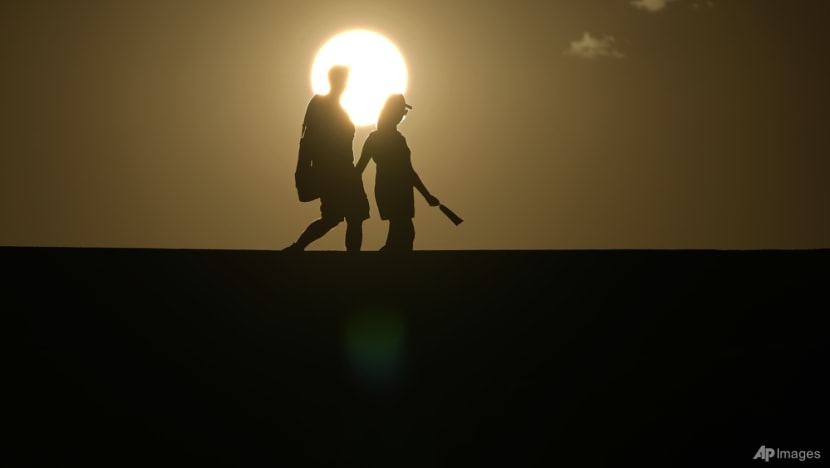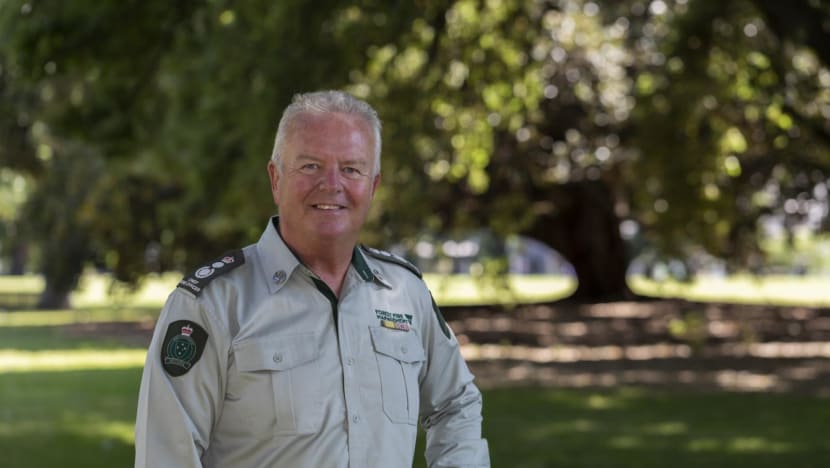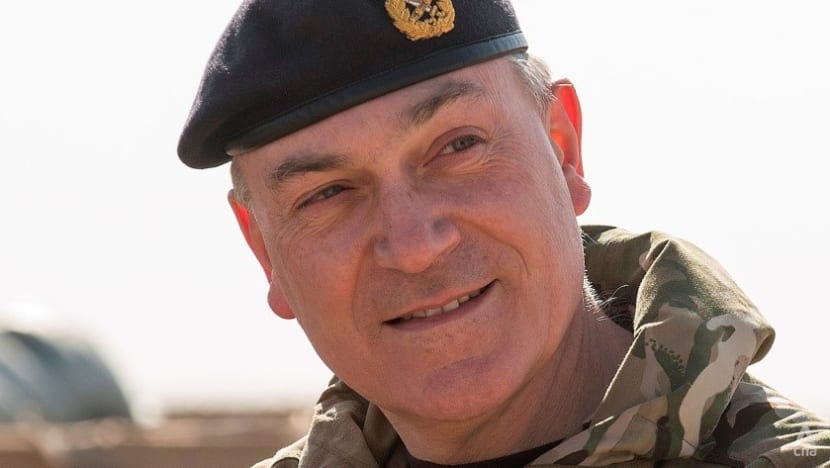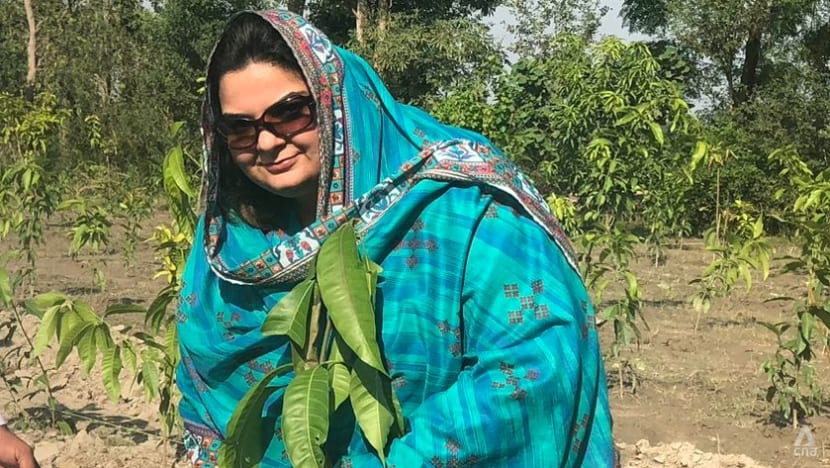How an overheated planet affects the lives of a farmer, a firefighter and a military general
Extreme heat is now becoming far more common – and not just in Singapore but all over the world. In a limited series Surviving the Sizzle, CNA’s The Climate Conversations podcast gets a ring-side view at how the lives of people are changed by soaring temperatures.

SINGAPORE: What do a farmer, a firefighter and a soldier have in common? Nothing at first glance.
But all three must face a force of nature they cannot control: Extreme heat.
The issue of rising global temperatures has been on top of the climate agenda and in addressing world leaders during an emotive speech on Sep 20, UN Secretary-General Antonio Guterres said that “humanity has opened the gates of hell".
Heatwaves and wildfires seen around the world have been marked as fresh evidence of the dangers of an overheated planet.
For Mr Chris Hardman, these dangers are personal. The chief fire officer at Forest Fire Management Victoria lost three of his firefighters to Australia’s catastrophic black summer fires.

“When you see the impact that it has on families, friends, loved ones,” said Mr Hardman who still grieves over their deaths, “there is nothing worth sacrificing your life for”.
He was speaking to host Julie Yoo on The Climate Conversations podcast’s limited series Surviving the Sizzle.
As the climate crisis deepens, the world must be prepared to live in a hotter world, said Mr Hardman.
It’s a sentiment echoed by retired British three-star general Richard Nugee.
“I was head of personnel for the whole of the British defence and climate change was never mentioned (at the board of defence),” said Lt Gen Nugee, who fought in Iraq.
Heat should be part of any military’s planning agenda, he added.
Convinced a climate-stressed world is as dangerous as any enemy, Lt Gen Nugee spent his final year in his military career leading a year-long review into the United Kingdom Defence Ministry’s approach to climate change and sustainability.
Pakistani farmer Rabia Sultan wraps up the three-part series podcast, sharing how extreme heat has severely affected her crop harvest.
WHEN A FIRE GOES OUT OF CONTROL
It was the summer of 2019 when Mr Hardman’s crew found themselves facing a raging firestorm. All it took was a change in the wind’s direction to turn a stretch of fire with a 5km fire front into a 50km long firestorm.
“It's really hard to describe in pictures what (a firestorm) is like, but it creates its own sound,” explained the chief fire officer.
“And it is terrifying.”
Four years on, smoke is back in the air with El Nino’s return.
Climate change has already lengthened Australia’s fire season. But El Nino’s arrival is breeding the perfect firestorm of hot and dry weather conditions that raises the risk of wildfires.
To protect critical infrastructure, Mr Hardman’s team are turning to advanced modelling tools to map out how fires can move across a landscape.
“As soon as there's a lightning ignition, there will be an immediate prediction through a computer-based model that will say this fire is going to do this in the next 24 hours,” said the chief fire officer.
This information could shape the fire department’s strategy and make their response nimbler.
“It is easier to put a small fire out than a big fire,” said Mr Hardman who believes that investing in preventative measures could reduce the scale of wildfires like those seen in Canada and Maui earlier this year.
“Living with fire is part of our future,” Mr Hardman warned.
“People need to educate and inform themselves. The more people know, the better off they’ll be.”
WHY CLIMATE CHANGE IS THE NEW ENEMY FOR MILITARIES
Heat exhaustion, dehydration and even heat stroke can quickly set in once temperatures reach over 50 degrees Celsius. A reality familiar to Lt Gen Nguee, the retired three-star general, when he was sent to Iraq for a peacekeeping mission.

The former British army officer was sleep deprived for months before he fell into a deep sleep for 24 hours when air-conditioned tents were sent to his battle group. By the time he left Iraq, his group of over 1,000 soldiers had burned through 180 IV drips for their dehydration symptoms.
“We were using very crude ways of staying cool,” said Lt Gen Nguee, sharing that he cooled his drinking water by keeping his bottle in a wet sock, a method used by soldiers in World War II.
With his experience in the field, combined with his growing interest in the threat of climate change, Lt Gen Nugee is convinced that armies must have a plan to confront climate change.
But the key is finding alternatives that cut military emissions and enhance their capabilities in one fell swoop, he said.
“You can be the greenest navy in the world, greenest air force in the world. But if you come in second in a battle, you come in second in a battle.”
A good example of a greener alternative is building solar farms to power military bases, said Lt Gen Nugee.
By building 76 solar farms across their bases, the British army is expected to slash over a third of their electricity bill and secure their own power supply. Ensuring that the military would have a continuous source of power if the national grid was ever brought down by a cyber attack.
“As a military force, having that self-sufficiency and resilience is a really good idea,” explained Lt Gen Nugee.
A FARMER FIGHTING AGAINST RISING TEMPERATURES TO SAVE HER CROPS
Resilience in the face of boiling temperatures can look very different for farmers in the global south. Without the money or technology to adapt to climate change, many farmers toiling under the hot sun will have to bear financial losses when heatwaves cripple their harvest.
For Ms Sultan, the Pakistani farmer, last year’s heatwaves wiped out 30 per cent of her wheat harvest.
“It’s a national loss … If one farmer is getting 30 per cent less crop, multiplied by so many farmers across the country,” she said.

With smaller harvests, scorching temperatures could lead to rising food prices in a phenomenon known as “heatflation”. By 2060, extreme heat could drive food prices up 0.6 per cent to 3.2 per cent, according to a 2023 study by the Potsdam Institute for Climate Impact Research.
Determined to find a solution, Ms Sultan has been experimenting with new ways of growing her crops, from simple fixes such as mulching to tapping on technologies like micro-irrigation to reduce her water consumption.

But she’s not stopping there. Ms Sultan has also been looking at digital solutions to improve her farm management.
“When I started farming, we could never understand that sitting at home you can also monitor the crops and fields by drones,” she said.
With these digital technologies, Ms Sultan hopes to reduce the amount of time she spent toiling in the heat.
Calling for the developed world to share more technologies with the global south, Ms Sultan said, “we need climate justice ... because this is a global issue. This is not an issue with South Asia or one specific region”.














